In my recent post about Victorian summer dresses, I came across photos of ventilated corsets; corsets made of ribbon or strips of fabric connecting the boning and ties. At first, I thought that they may have been a new summer-friendly invention of the late Victorian era but I came to learn that ribbon corsets were part of the short-lived part of the Edwardian move toward “athletic” corsets, i.e. corsets created to keep up with the rapid expansion of women engaging in sports. They were more pleasing to the eye than other such corsets that would be produced during the time. Today, they have a large fan base with many video tutorials available on how to make them. An impressive accomplishment for an item only available for less than ten years.
Let’s explore the short-lived but much-loved ribbon corset trend.
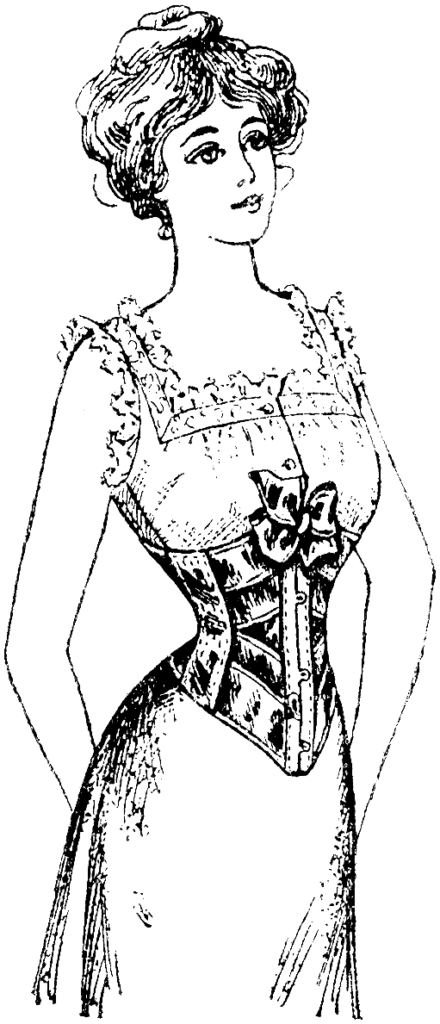
Victorian corsets vs. Edwardian corsets
First, it is necessary to look at the change from Victorian to Edwardian corsets and why the ribbon corset made such a splash.
The corset most popular before ribbon and athletic versions emerged had two significant differences. First, they held their shape with the use of “boning” wrapping around the entire width of the corset. The boning was stiff and helped to facilitate the upright silhouette of the day. It also allowed for little freedom for sporting activities such as bicycling and tennis.
(Note: the first ribbon corsets did appear in the late-Victorian era, but they would pick up the most popularity several years later.)

Enter Edwardian corsets
While more flexible corsets rapidly entered the market, Edwardian corsets were also altered to support the newly popular S-curve silhouette. An issue of the San Francisco Call from 1903 says of the new models:
“Edwardian corsets were usually straight-front corsets, also know as S-curve corsets. However, ribbon and sports corsets often had a curved waist line, similar to Victorian corsets: ‘One radically new thing about them [athletic corsets] is that they have not the long front straight, as a board, so that the figure looks as thick at the waist as it does at the largest part of the hips. A slight curve is natural, and it is far more lovely than a straight line.” .
Read more about the S-curve here: Achieving the Gibson Girl S-silhouette: it’s all about the padding
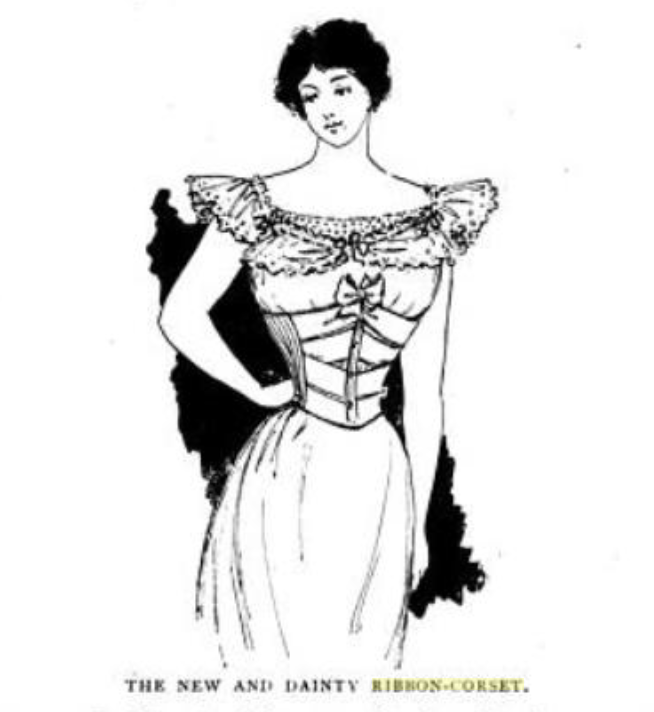
And an unusually helpful Wikipedia entry says of the ribbon corset:
“The ribbon corset is made of pieces of ribbon, as opposed to fabric. In 1901, a simple pattern of silk ribbon, two bones, and a busk was available, allowing women to construct their own ribbon corsets.
A pseudo-ribbon corset looks like a ribbon corset but is made from cut cloth instead of ribbons. The outside seam of the cut cloth is sewn fine, while the tight inside seam is sewn plain and curved.”
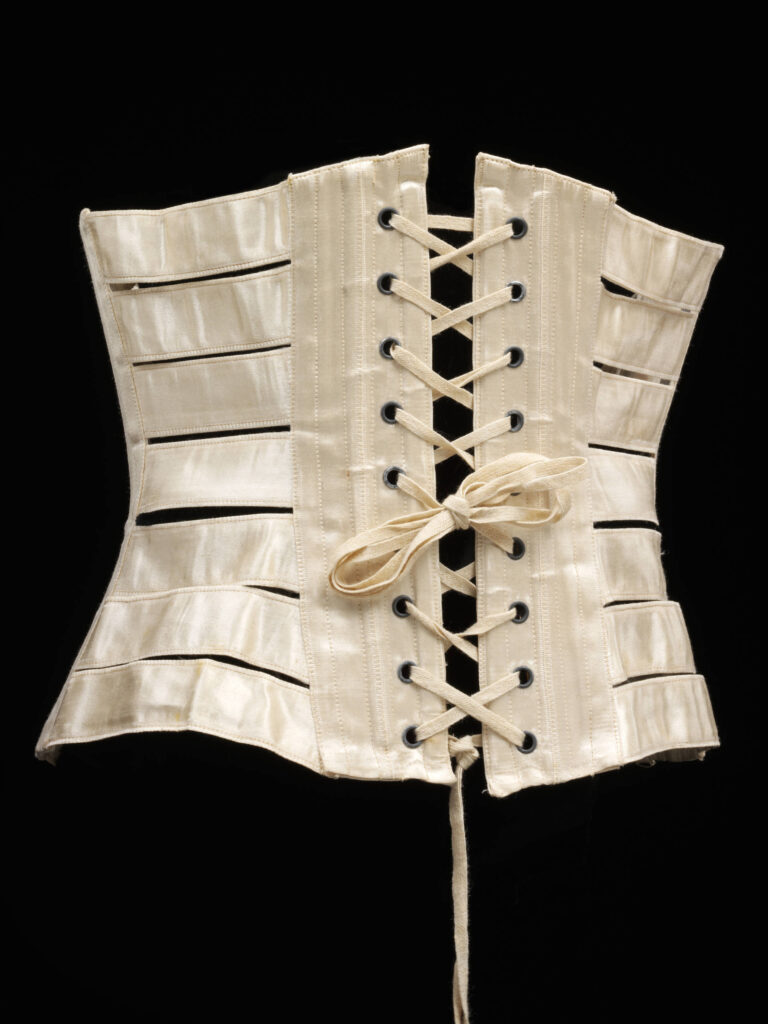
A short-lived, but much-loved, trend
Historic costumers still love the ribbon corset today, and I came across far more modern references and examples than Edwardian. If you’d like to make your own, you can enjoy the tutorials below:
Making an Edwardian Ribbon Corset
Homemade Blue Ribbon Corset | Lucy’s Corsetry
How to Make a Basic Ribbon Corset
While popular today (I now have my eyes on a few!), ribbon corsets didn’t stay on the market for long. In a collection of over 100 corsets owned by The Metropolitan Museum of Art, I only came across two examples. I believe the V&A museum boosts just one. But perhaps the female race was ready for something new, as magazines and newspapers around the country reported on what a delightful new option it was.
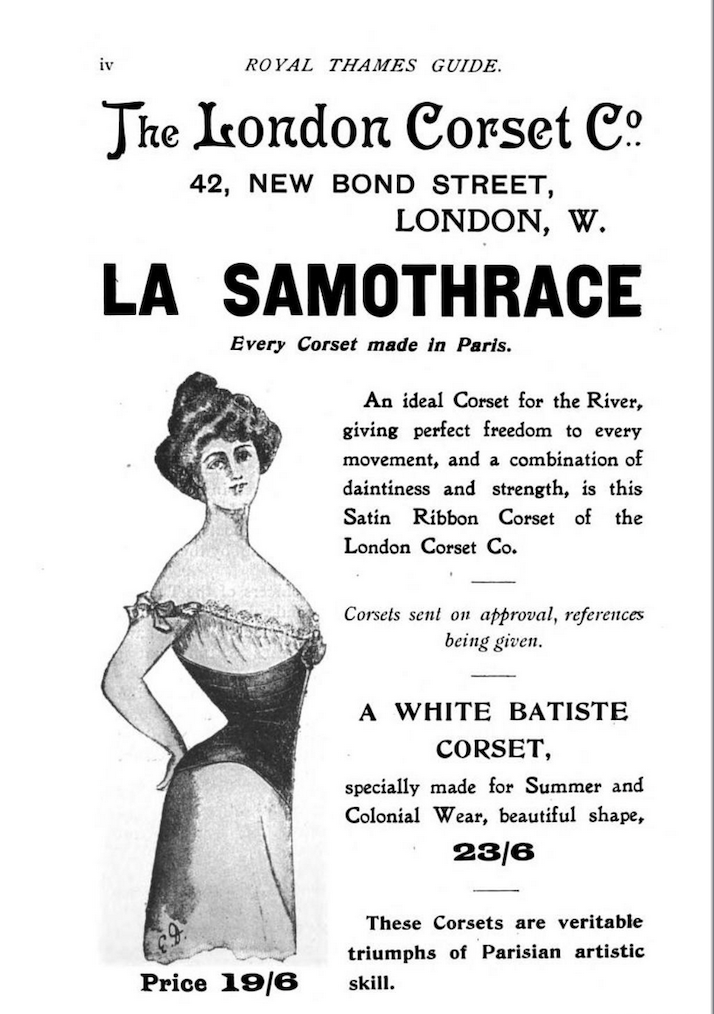
Thank you to Wearing History for the amazing research!
“Some of the most comfortable of the summer corsets are made entirely of strips of narrow satin ribbon. The corsets are very short, and the ribbon of the stoutest quality, and since the gayest colors are used for them, they have quite a frivolous air.” ~The Chapman Advertiser (Chapman, Kansas) December 26, 1902.
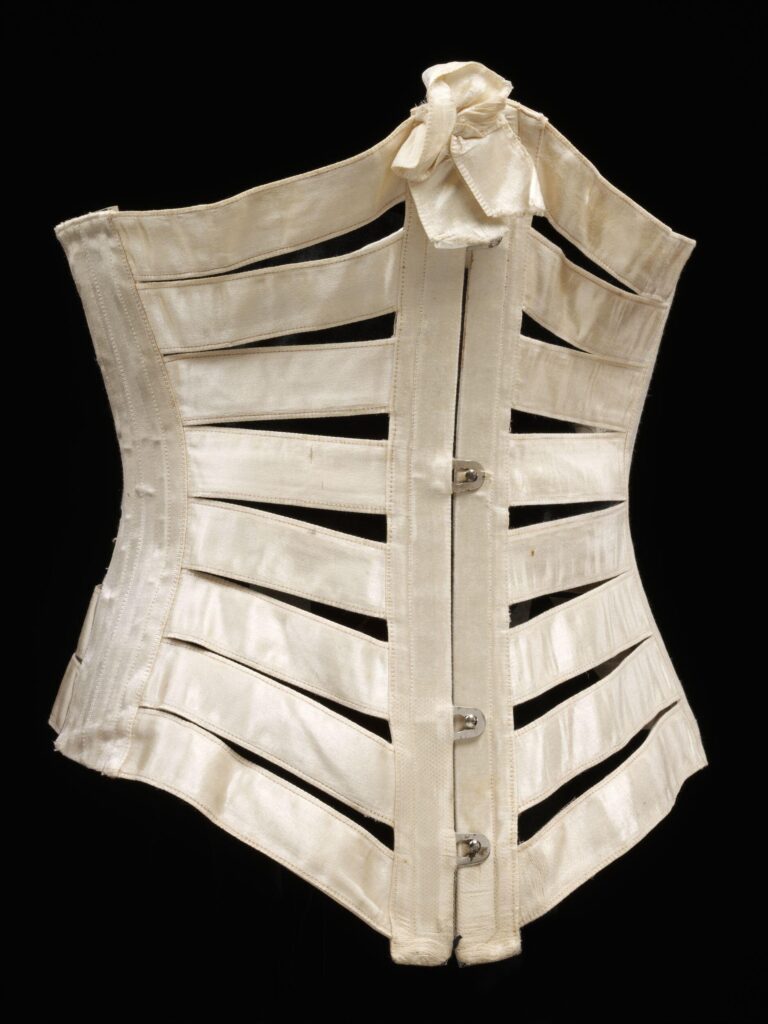
“These ribbon corsets are not only very comfortable, but they are very pretty…
…At one time these ribbon corsets were very much in vogue and were worn by many women in society, and it is pleasant to see that they are coming into fashion again. These short corsets can be bought made of tape instead of ribbon, and they are very cheap, but is only a slender figure that can wear them.” ~Messenger-Inquirer, Owensboro, Kentucky. October 10, 1906.
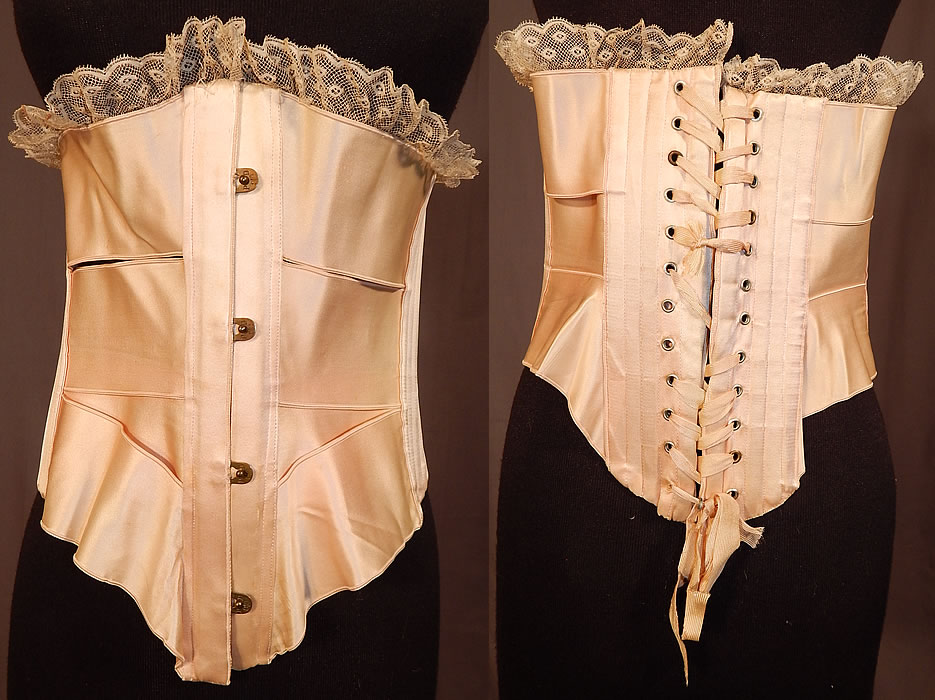
“Ribbon corsets are among the fall novelties. They are beautifully made of rows and rows of wide satin ribbon, each ribbon overlapping the one below and held securely in place by hand embroidered daisies, fleur-de-lis, or rosebuds. At the top there is an edging of baby ribbon fulled on or a piece of sheer valenciennes lace gathered to make a tiny finish. In white ribbon these corsets are delicate enough for a bride, but for practical use the ones of tan, light blue, or pink are most serviceable.” ~The Sydney Morning Herald (NSW Australia), November 27, 1906, page 12
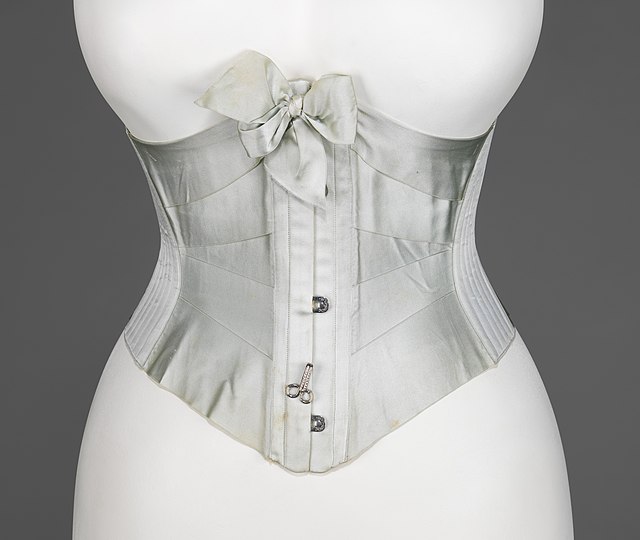
We have at last found something we have been searching for for years— a really cool corset. I immediately share the trove with you, dear coz. It is called the French ribbon corset, and is made of ribbons specially manufactured for extra strength, and so arranged that there are spaces equal in width to that of the ribbons between them. This secures the very necessary and acceptable ventilation, and a delightful coolness is the result. You will be glad to know of these now that the hot weather is coming on. The corsets are not expensive, especially when made of the pretty broche webbings, which are even stronger than the ribbons. The shape, too, is unusually good, and gives agreeable support to the back while throwing out the chest and keeping flat what some tailors call the “lower chest”. ~Harpers Bazaar, June 9, 1900.
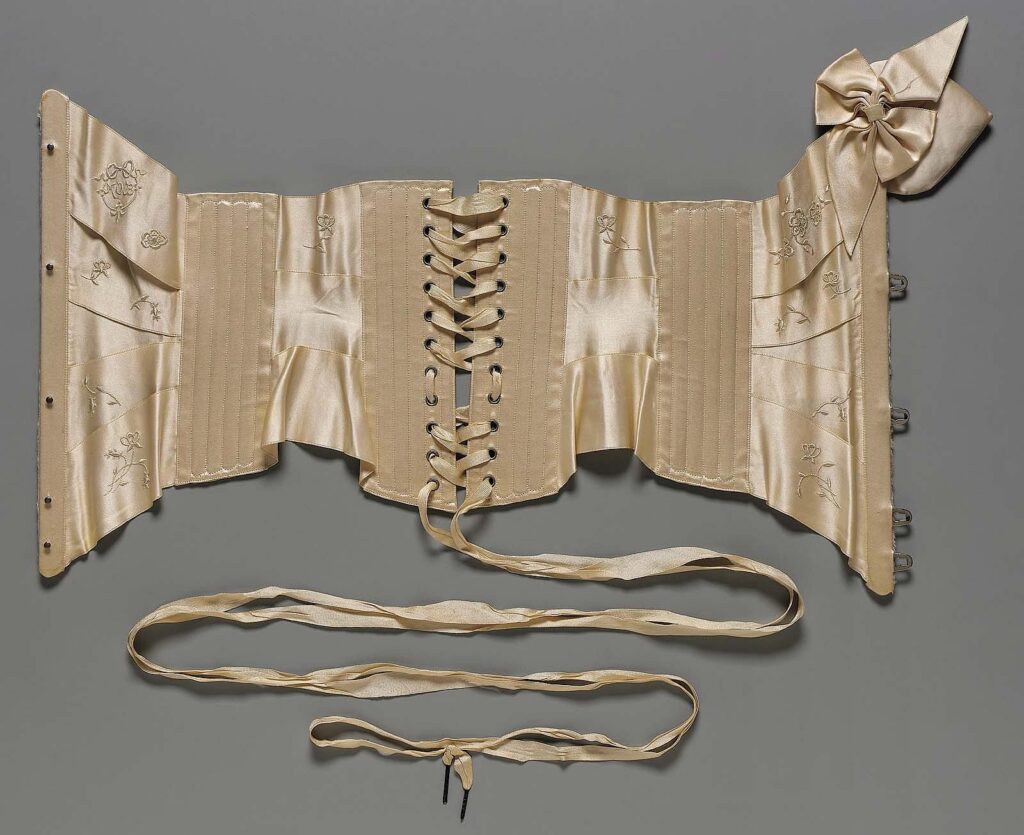
Do you love the Edwardian era? Add to your collection with our ensembles:
The corset is phased out
Most good things come to an end. It may have been loved, but women loved fashion and mobility more. Ribbon corsets peaked in popularity around 1906, along with other versions of this centuries-old underpinning. But…
Fashion was about to change the history of women’s unmentionables forever.
The S-curve was still the look of the day as 1910 arrived. From there on after, however, women’s clothing would move toward the “shapeless” style the Roaring 20s is so known for. Corsets would become increasingly obsolete, arriving today as lovely, optional tops that we get to show.
More about unmentionables through time:
Victorian and Edwardian combination garments
Bloomers: the national controversy of the 1890s
One hundred years of nightgowns: from the Victorian era to the 1950s

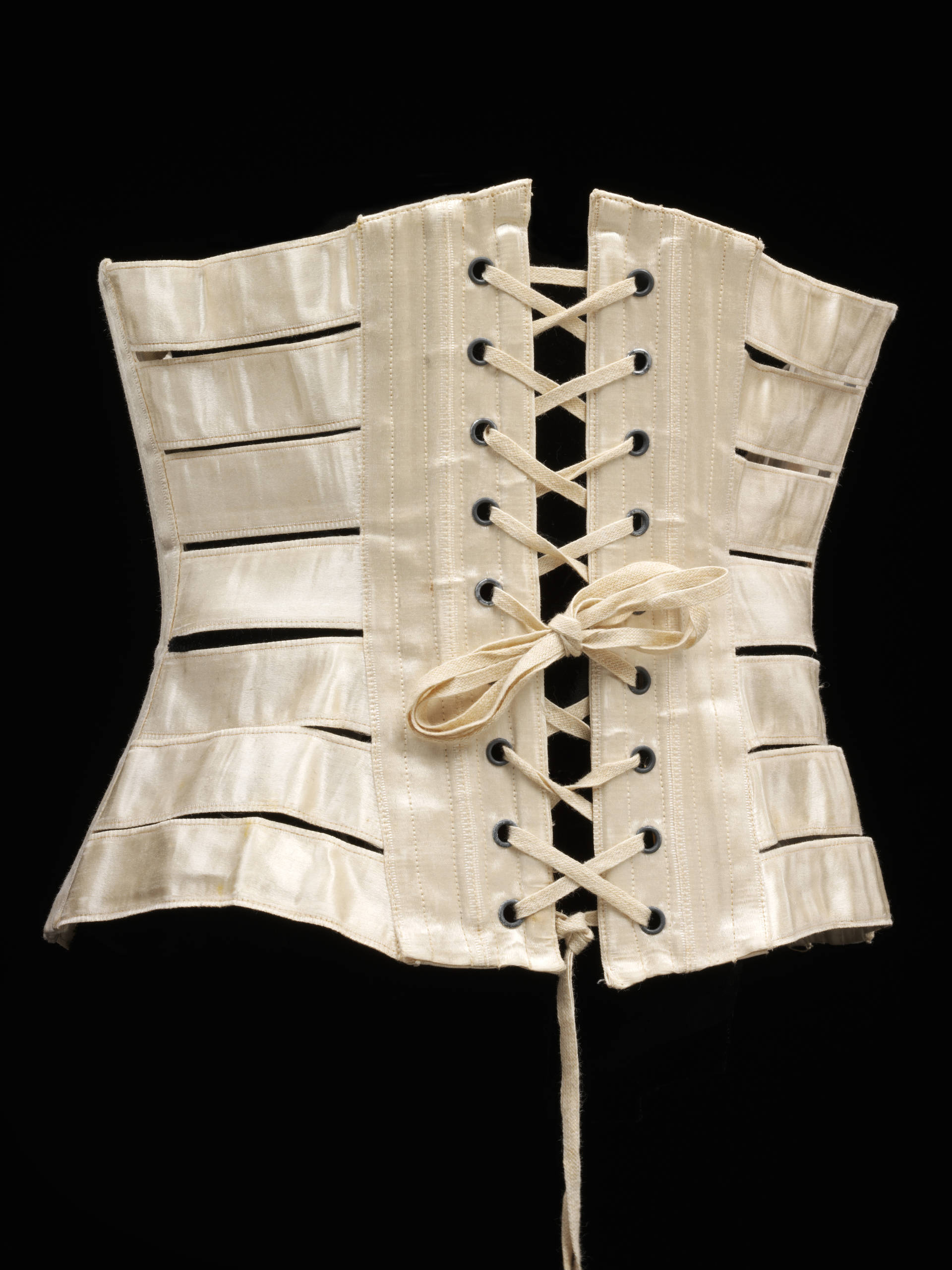


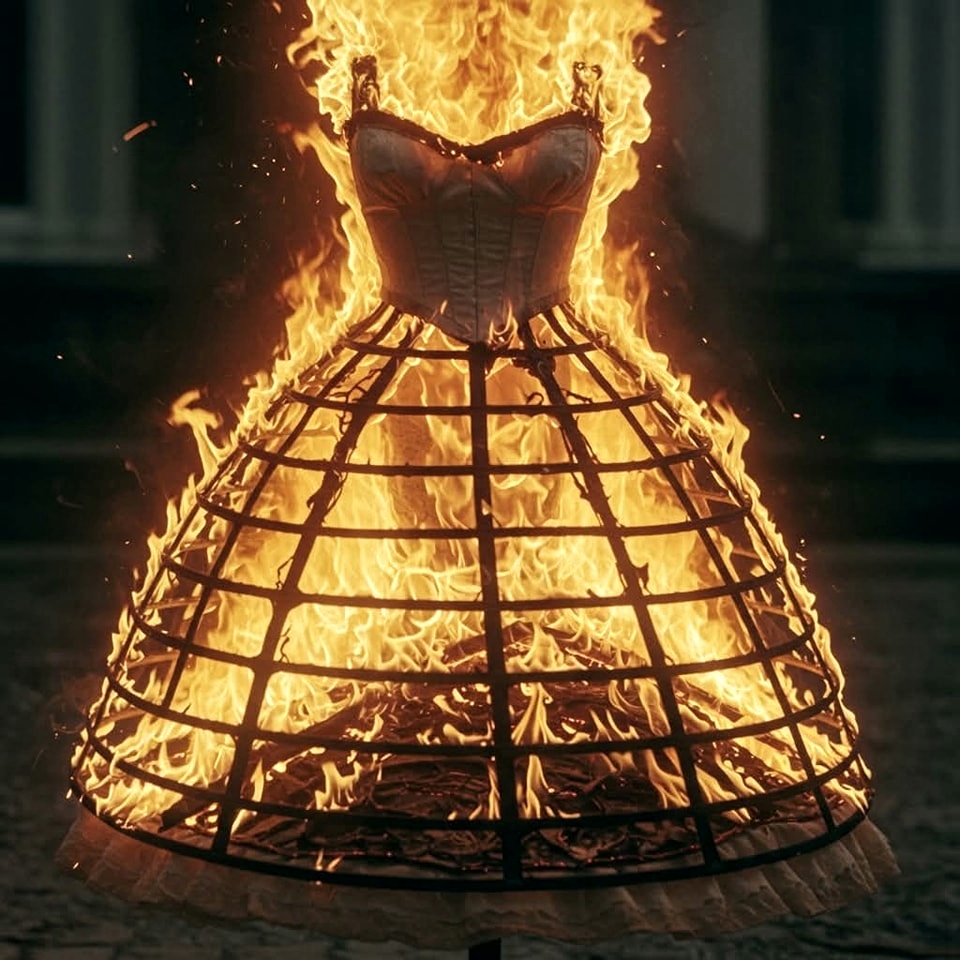


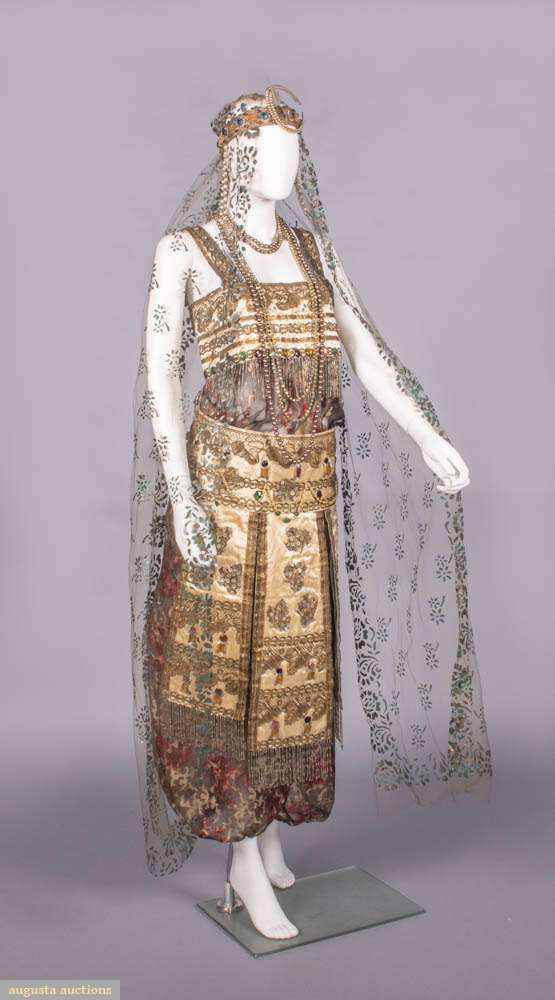



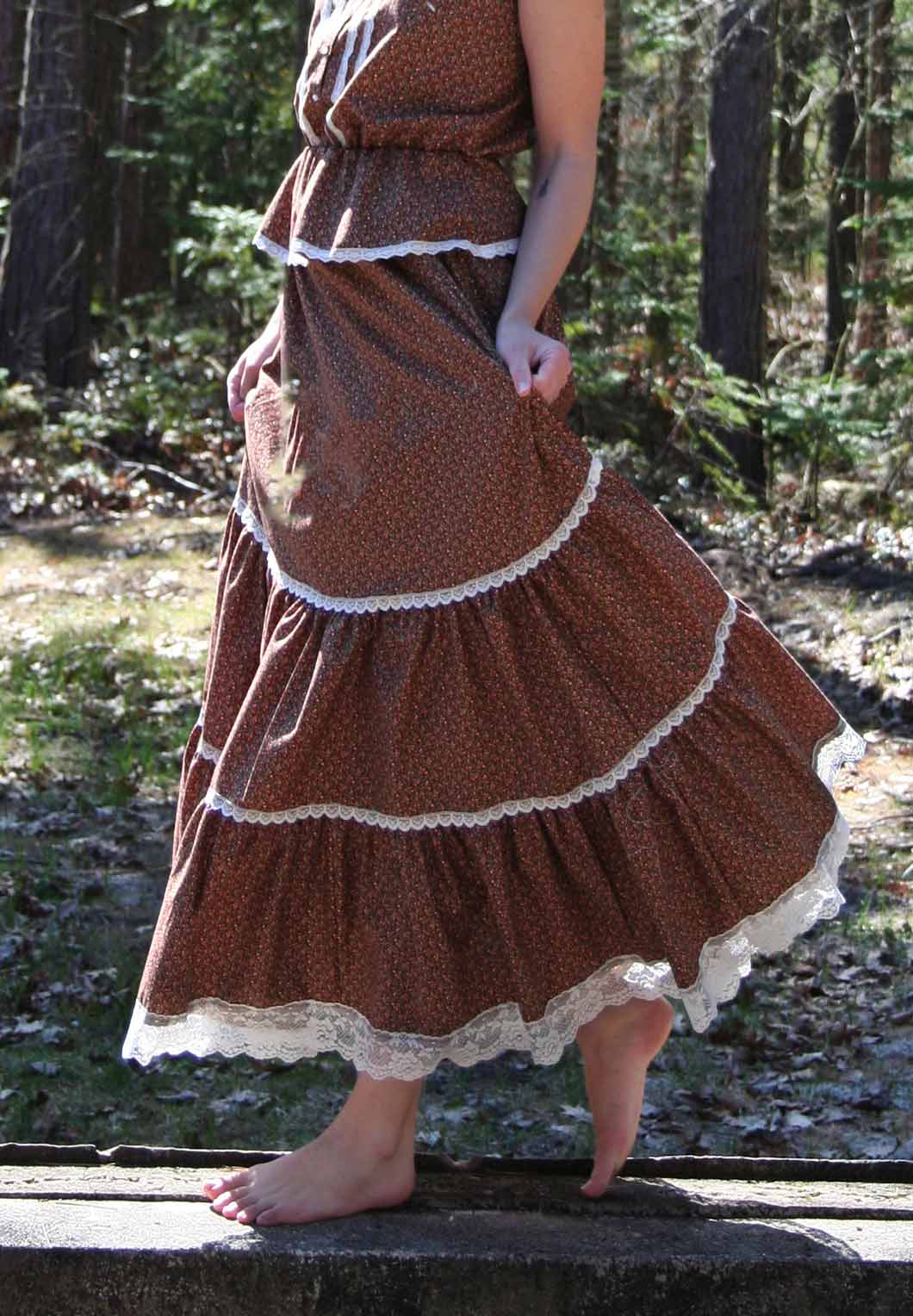
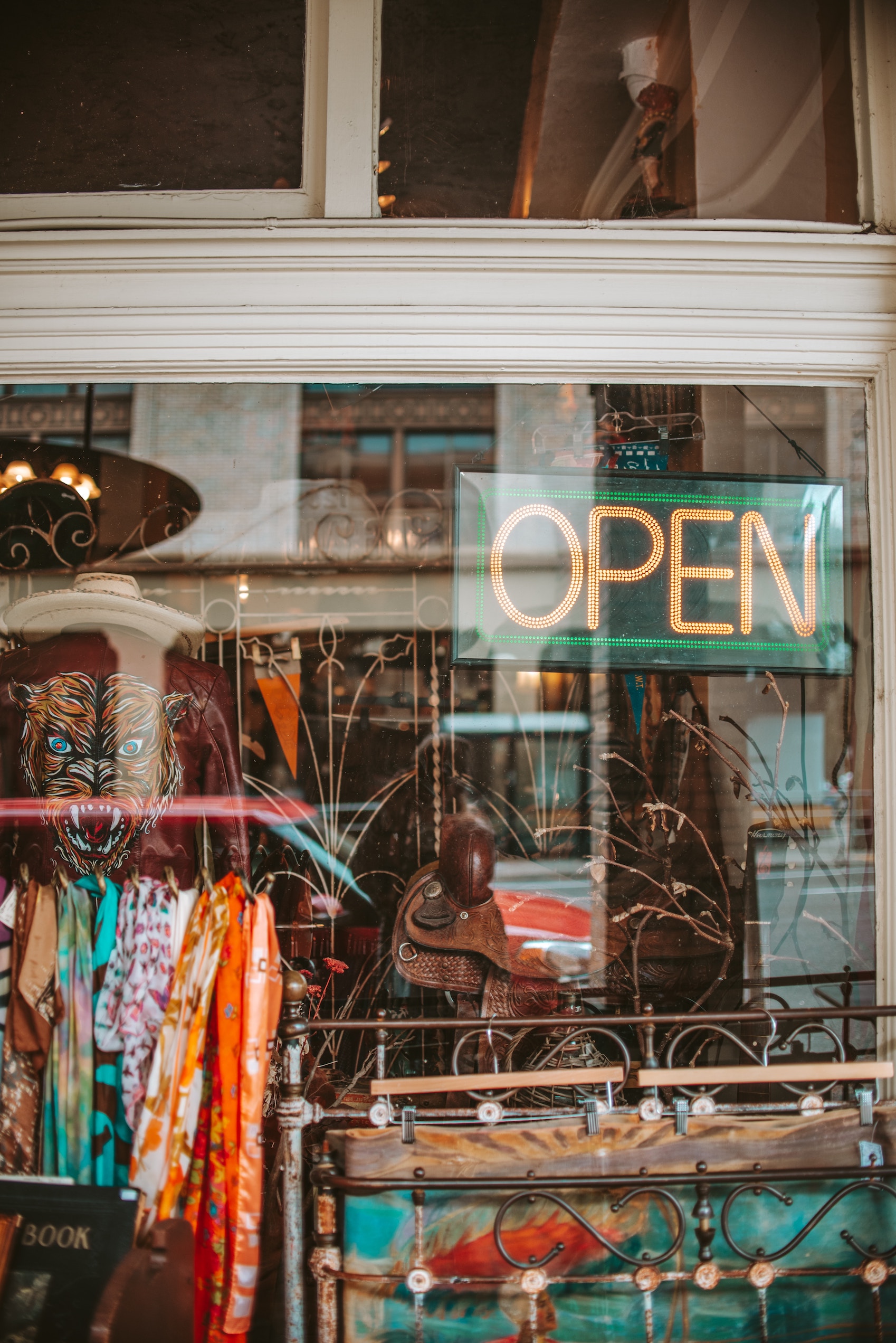

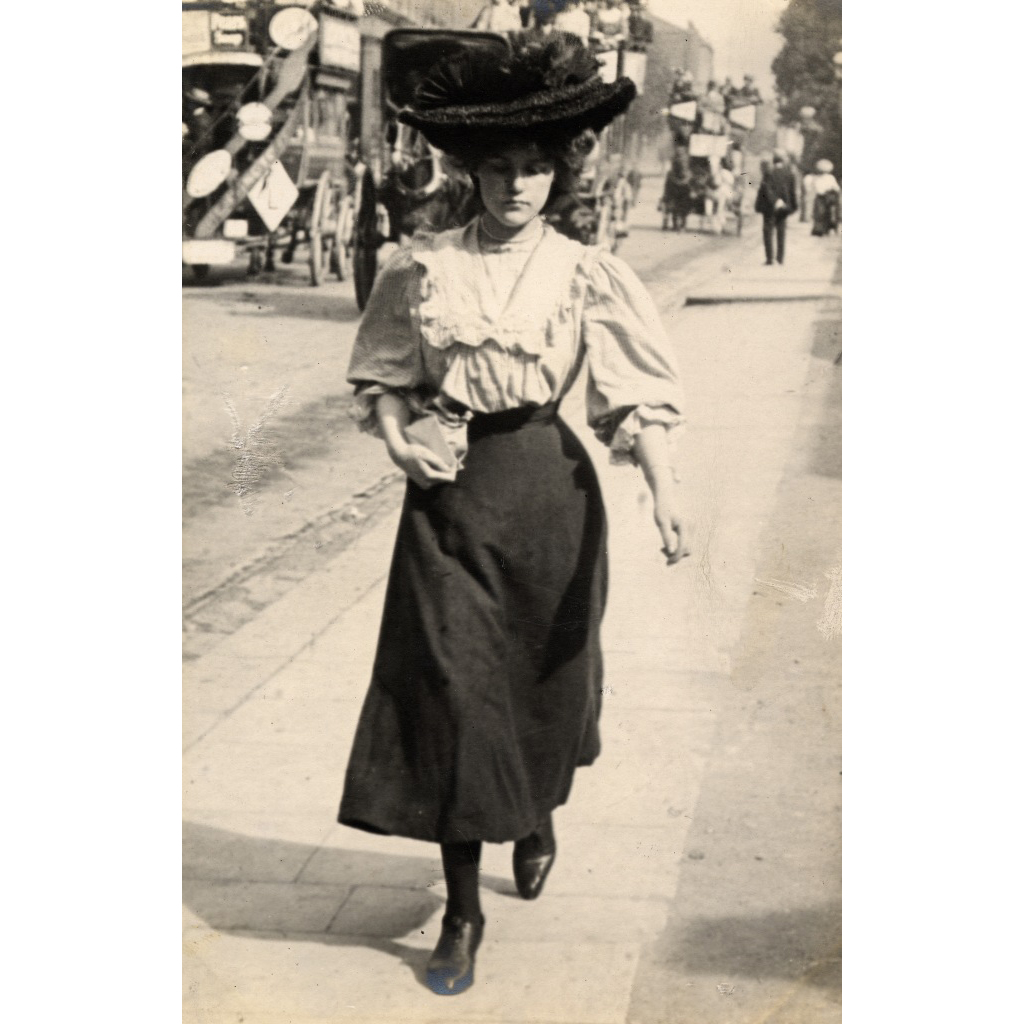
Leave A Comment